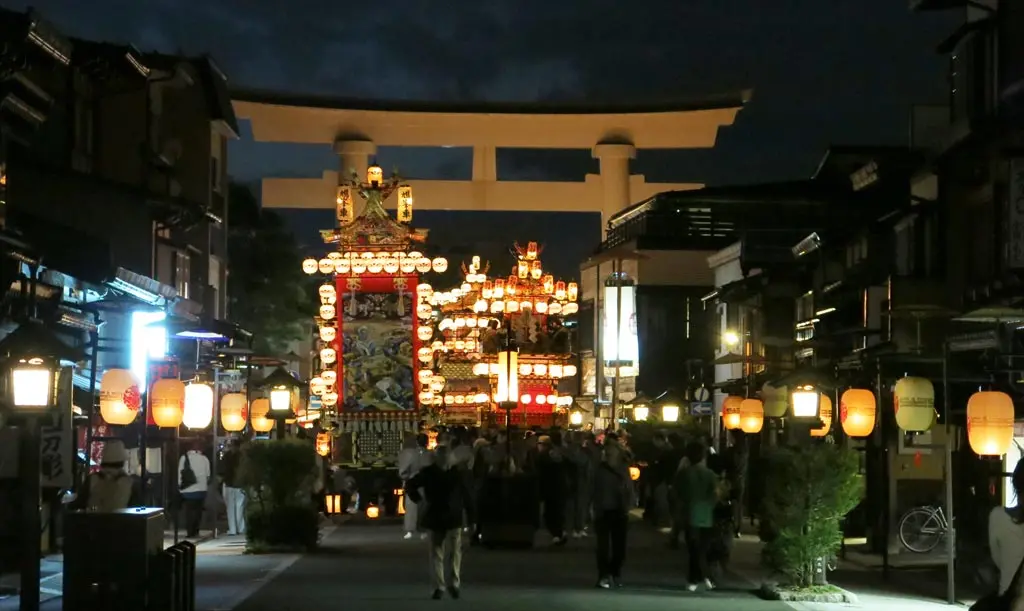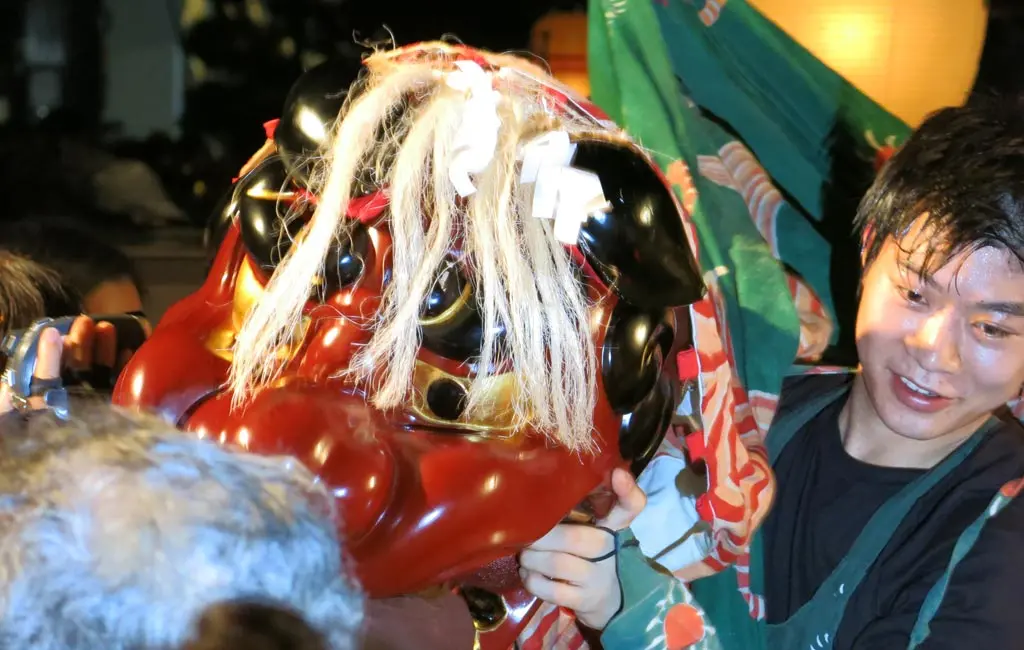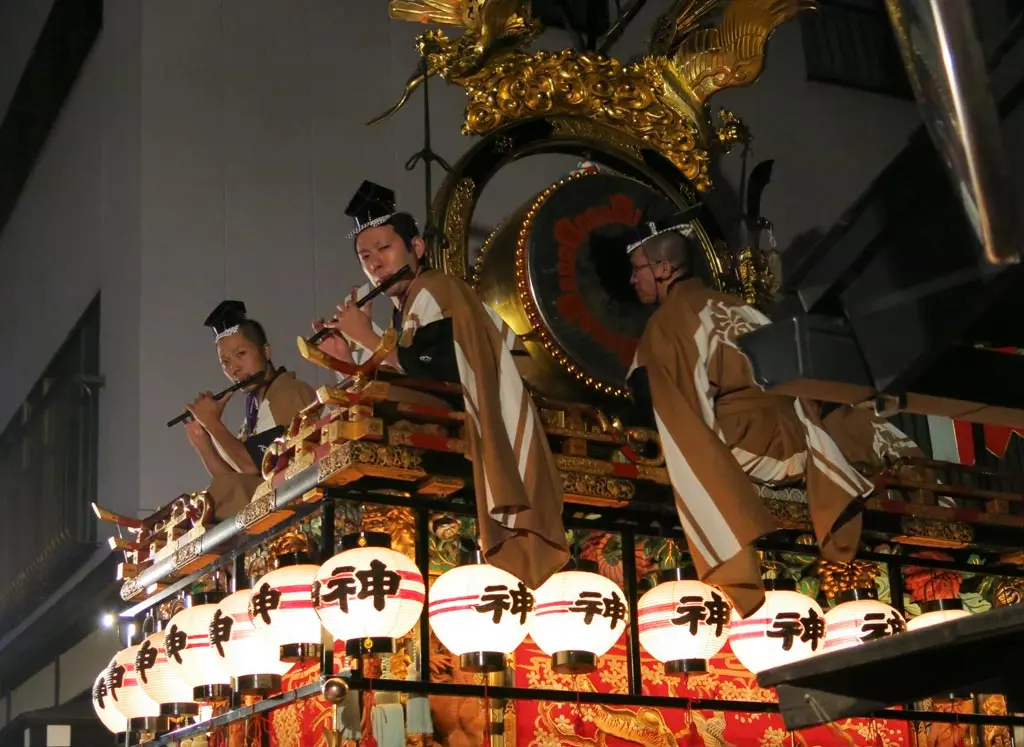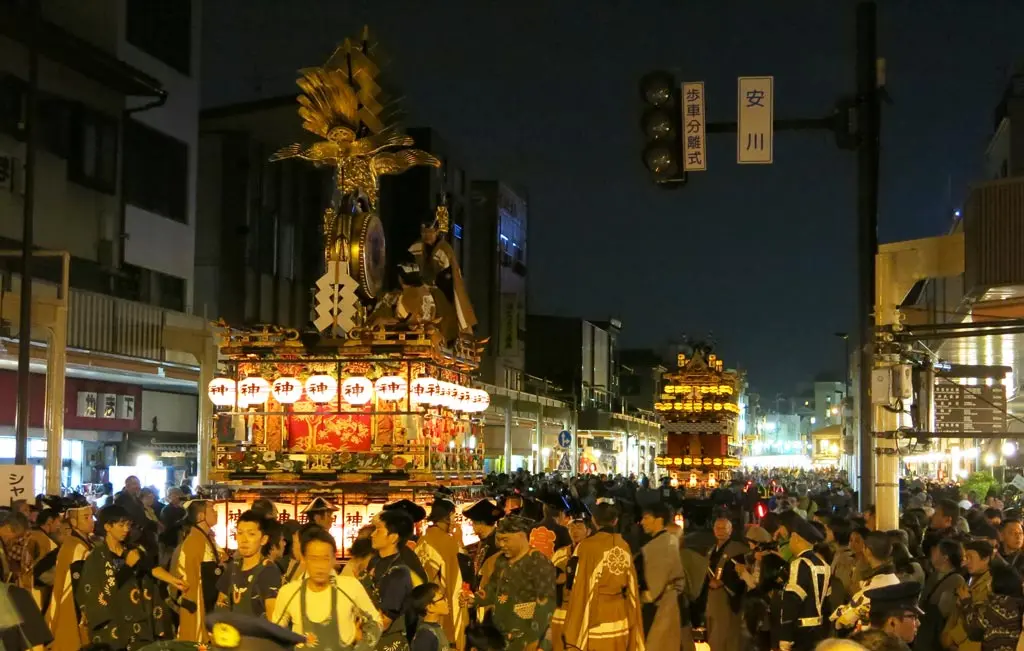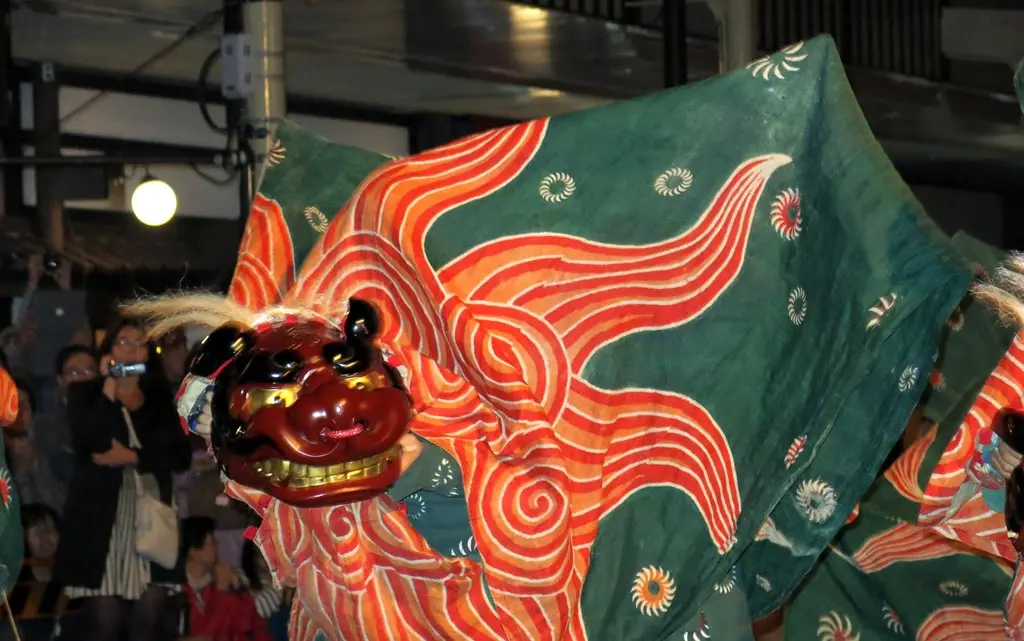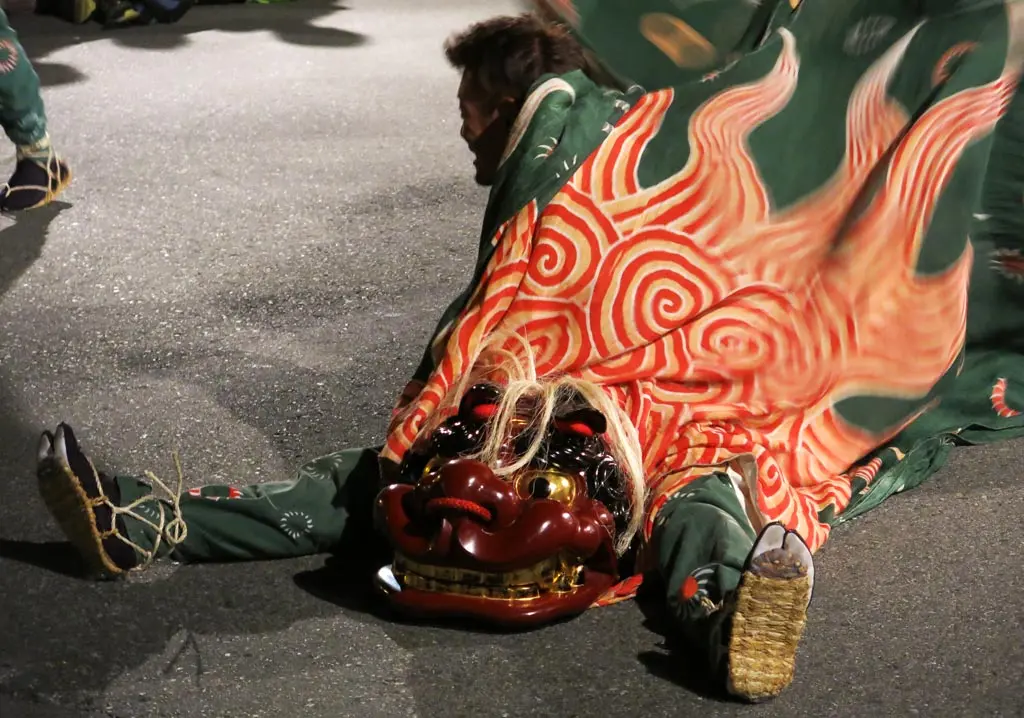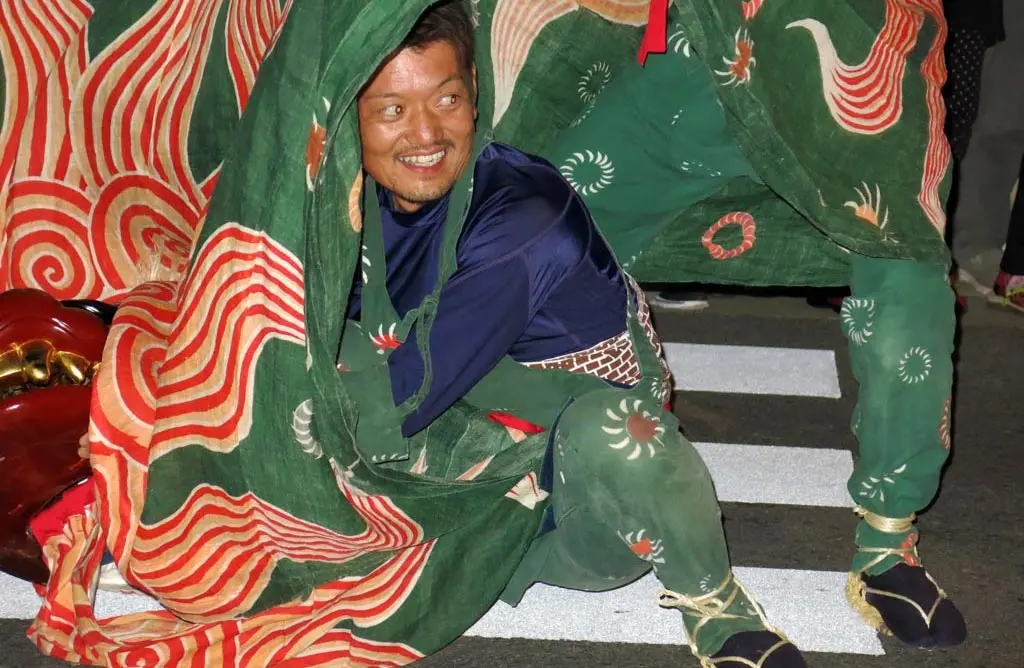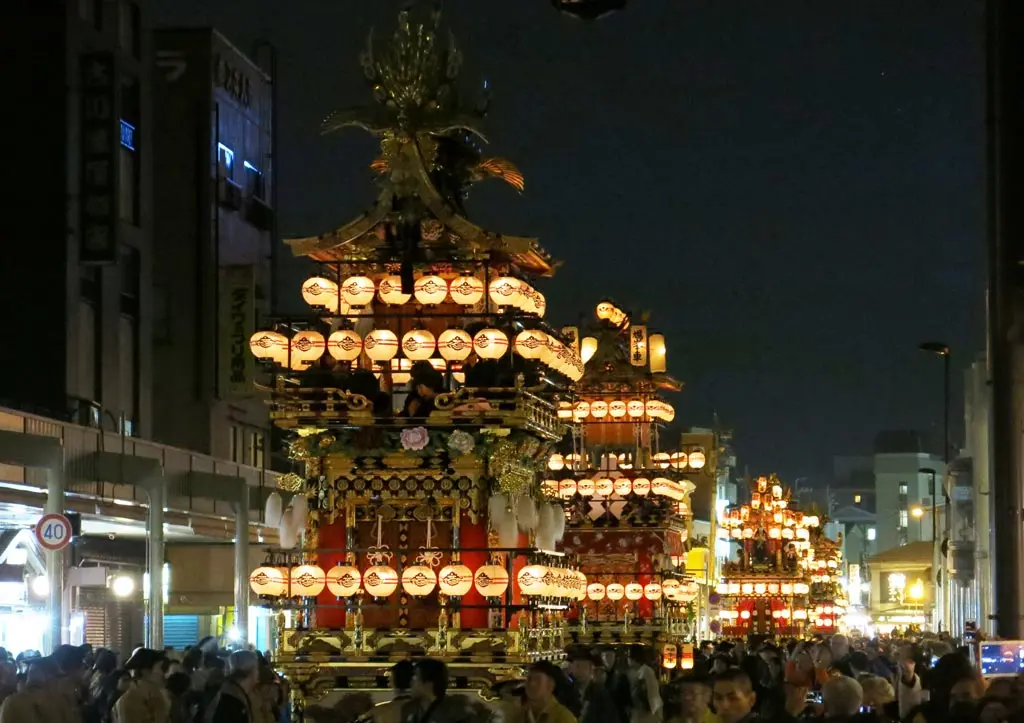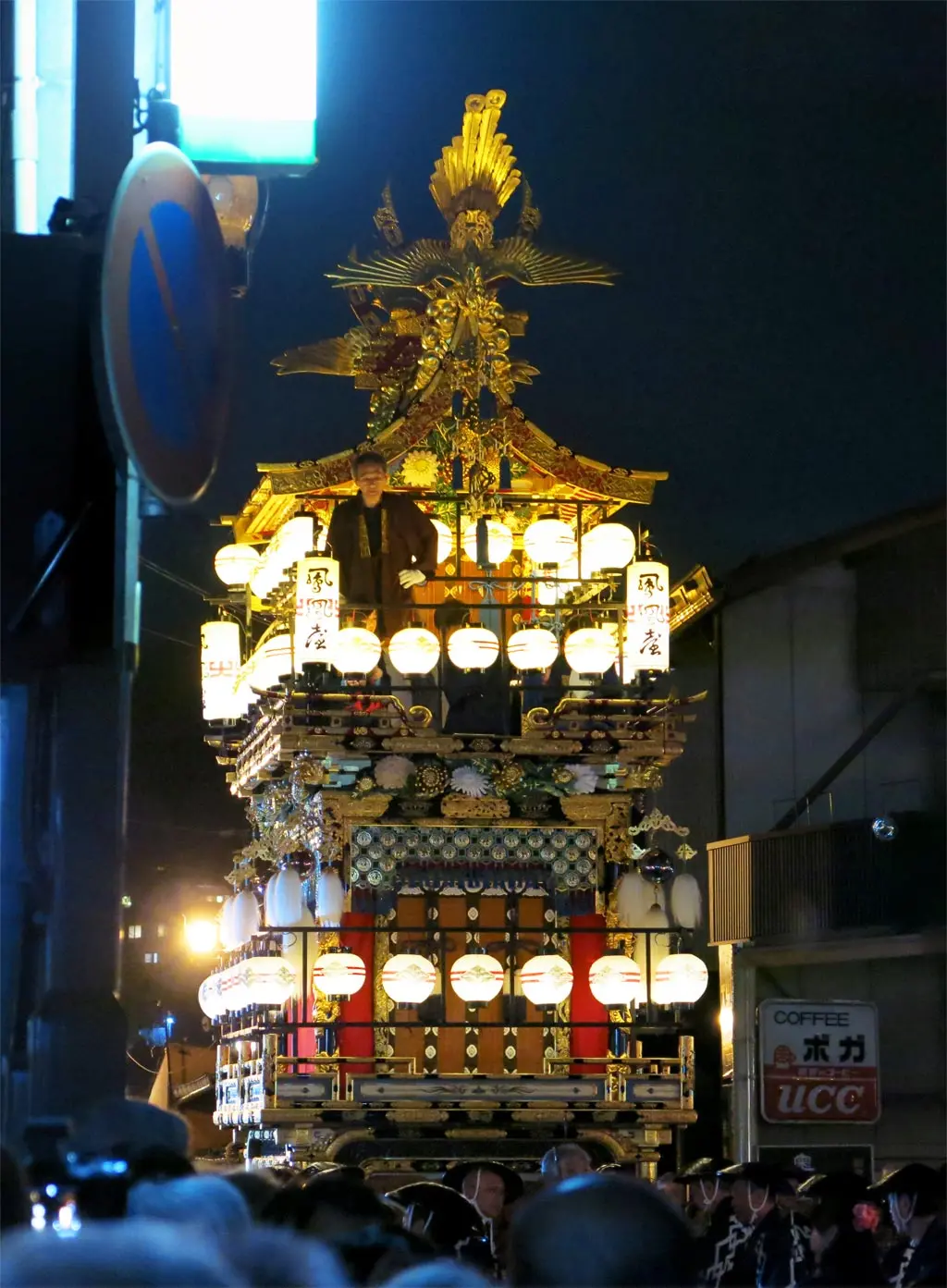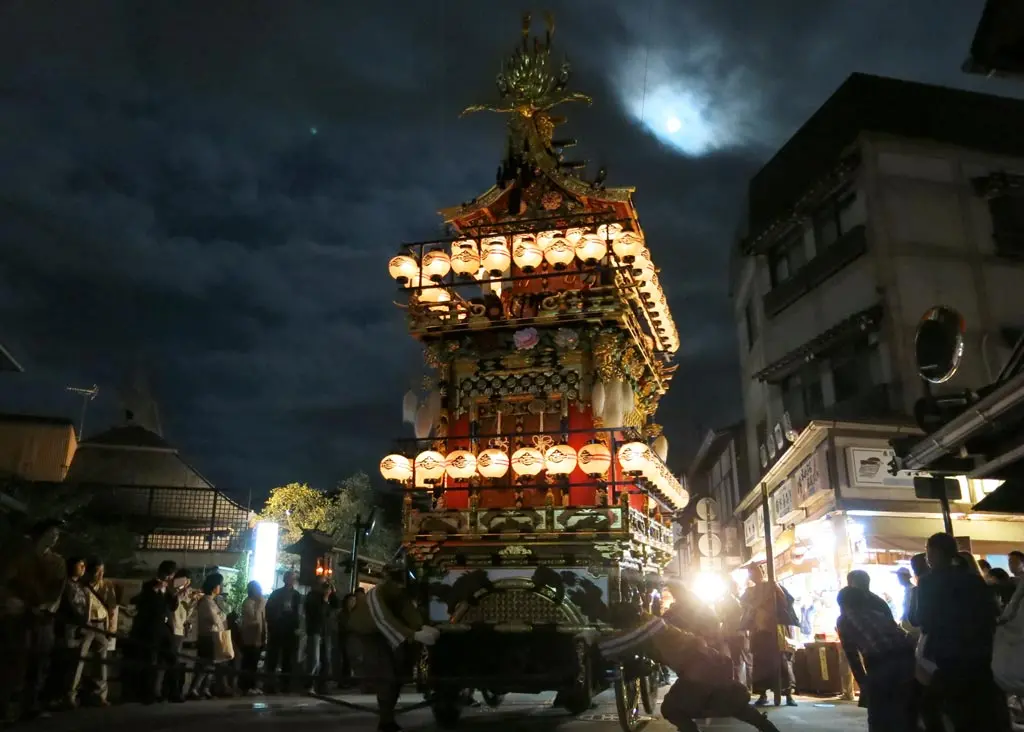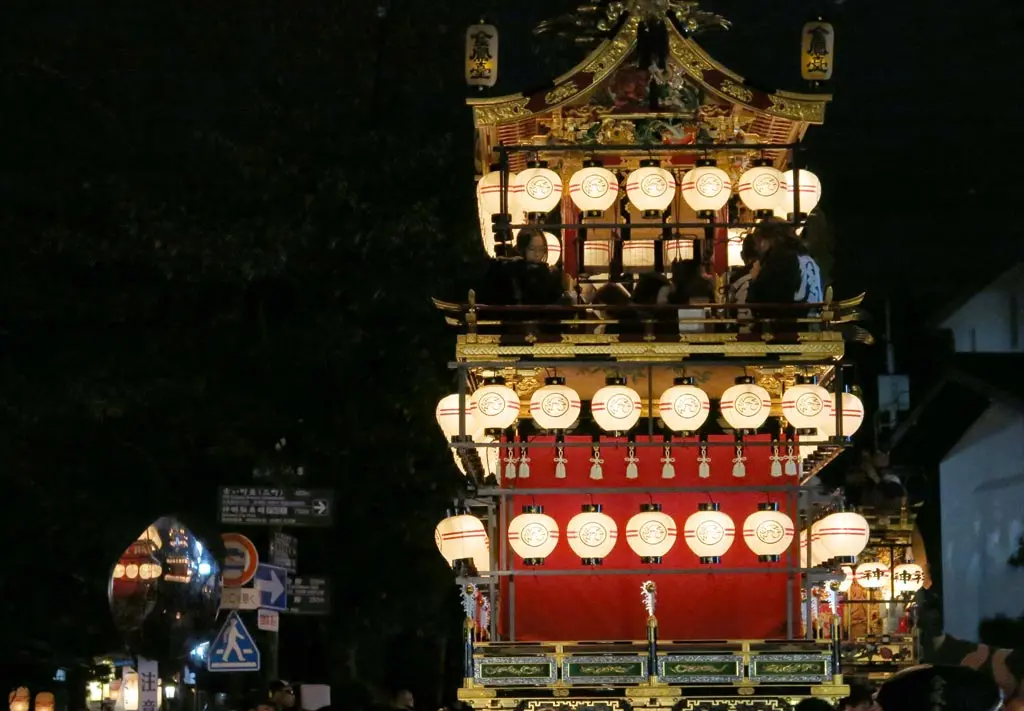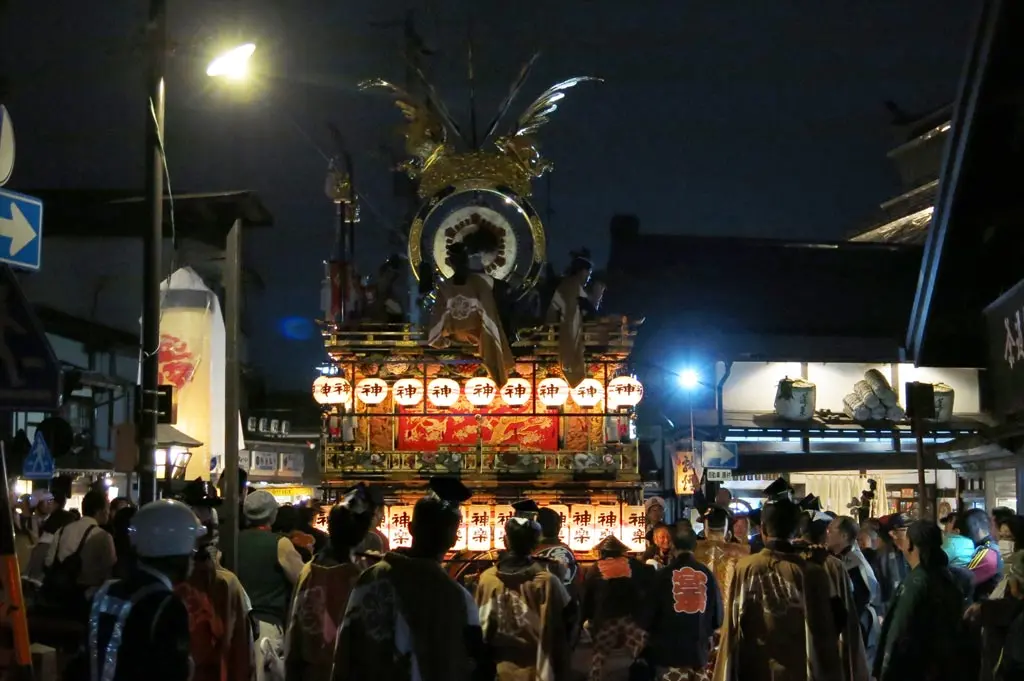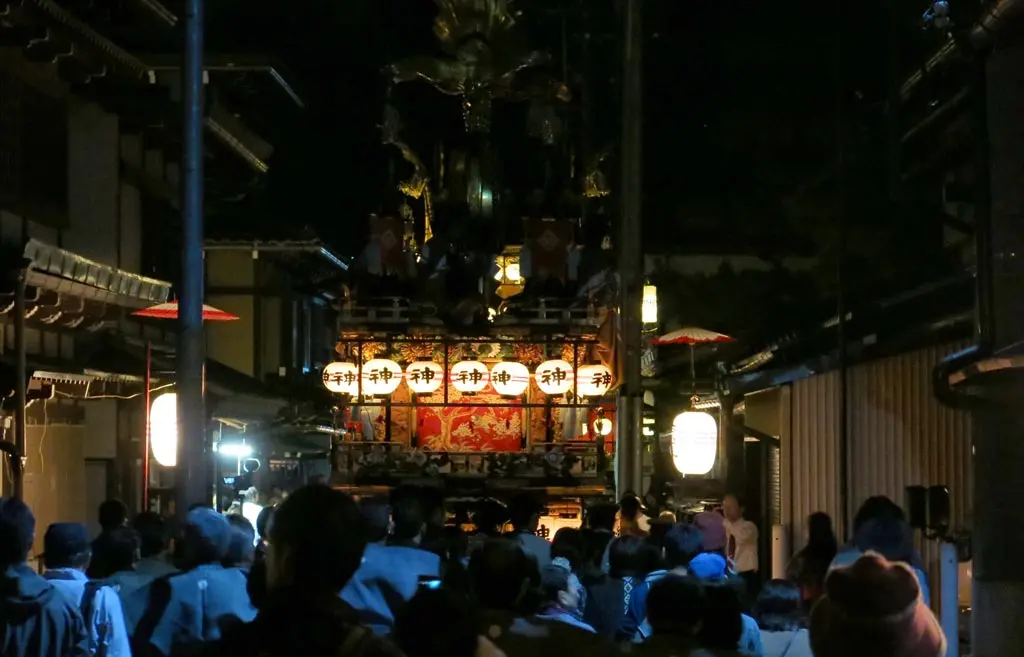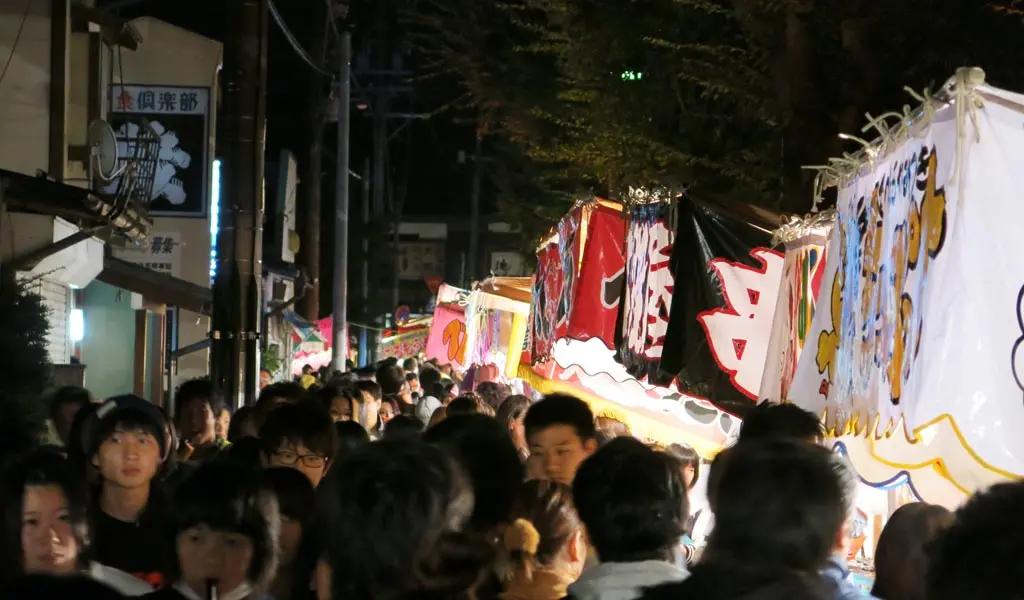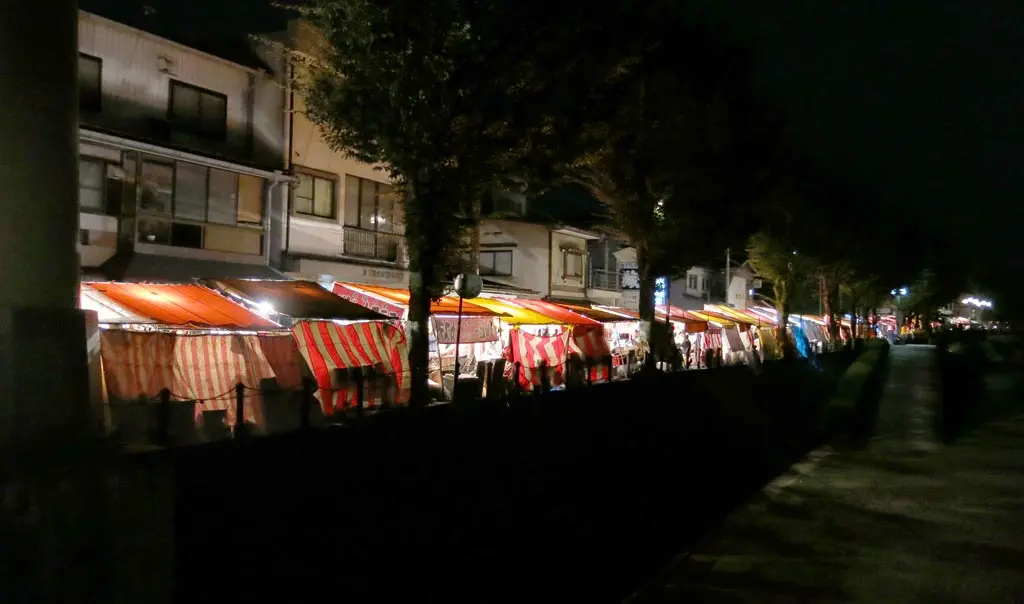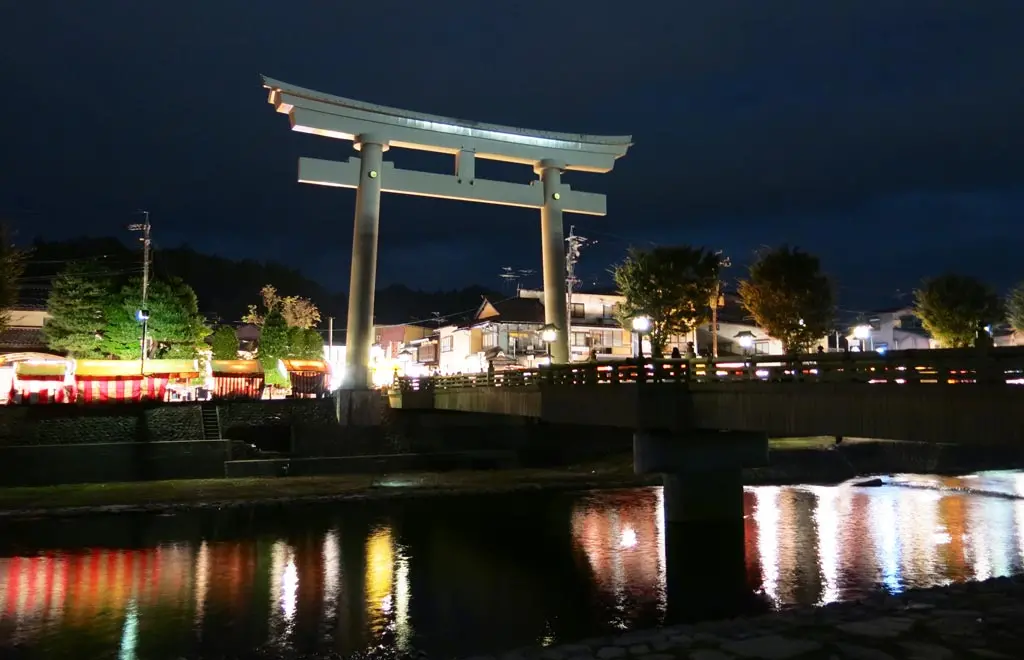Complementing the Spring festival held in April, this week was Takayama's Fall Matsuri 秋の高山祭. The Spring festival celebrates the Sanno Shrine 山王神社, and takes places on the southern end of downtown Takayama. I wrote about that one here: April 17th, 2014. The Fall festival is on October 9th and 10th, and centers on the Hachiman Shrine 八幡神社. This is the more northern area of downtown Takayama, and is much closer to my house. :)
Thousands of tourists, both domestic and foreign, come to Takayama to view the beautiful and hand-crafted festival floats, or yatai 屋台. The floats are pulled out of storage, and displayed for the town to see. Every year, there are marionette performances からくり奉納, and a procession of the shrine 御巡幸. At night, the floats are lined with lanterns, and paraded through town.
This year, the crowds were really sparse. Perhaps only one thousand people actually attended. The newspaper blamed the eruption of Ontake-yama, and the recent typhoons.
Both festival days were weekdays, so I could only attend the night parade, as usual. This was better than last year, though, which had the night parade canceled due to rain.
I arrived after the parade started, but that's fine. It began at 6pm, and continued until 8:30pm or 9pm. It mostly circled through the streets downtown, so it was very easy to go down side streets and catch up with the start of the parade.
The last few floats were still waiting at the starting point when I reached Hachiman shrine. Circling around to the start was easy. I tried to watch the Shi-shi performance, but the crowd was too large to get a good view. One of my 4年生 students found me. She's a tiny girl less than a meter tall. She could not see either.
She had me follow her to the next point ahead of the parade, and we waited while see showed me her pictures. There were almost no people there either, so we had a front view of everything. The Shi-shi arrived and waved to the crowd. All of the teenage and child Shi-shi dancers were students of mine (past and present). One yelled out, "Hey Jimu!" The whole crowd was silent as I replied, "Hello!"
They continued walking on, and the floats followed.
There are 11 floats in the Takayama Fall Festival. Here are the floats that went by. I'm not sure why they were out of order.
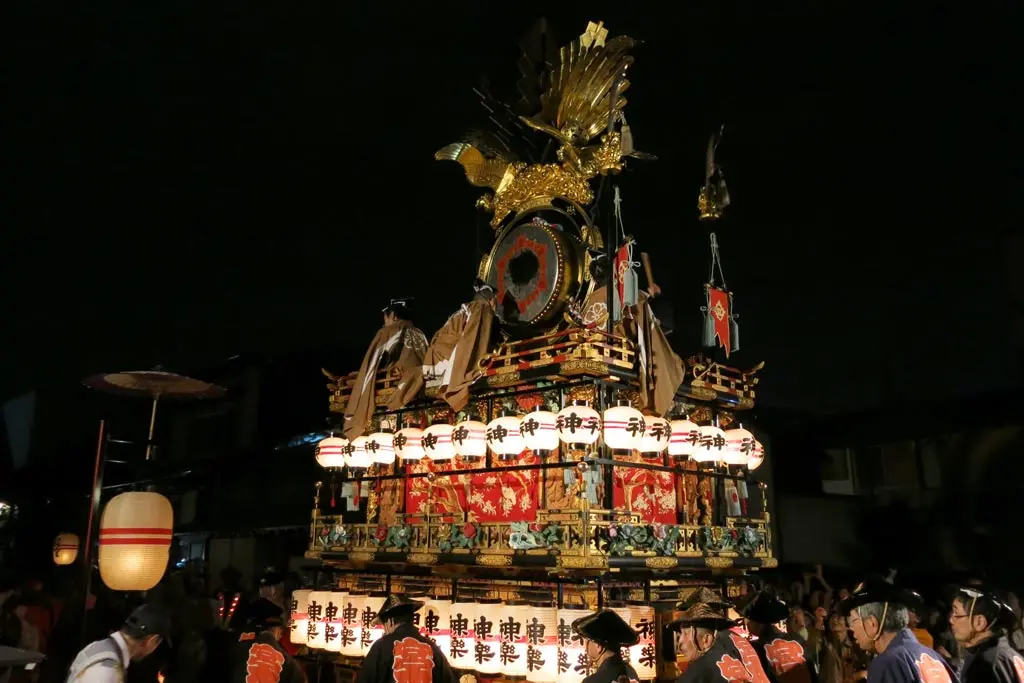
Kagura-tai is the front float for nearly every float parade. It's nickname is the way-fearer, and its riders sound the massive drum to signal everyone to make way for the coming parade. It's kanji is god 神 music 楽 (or fun).
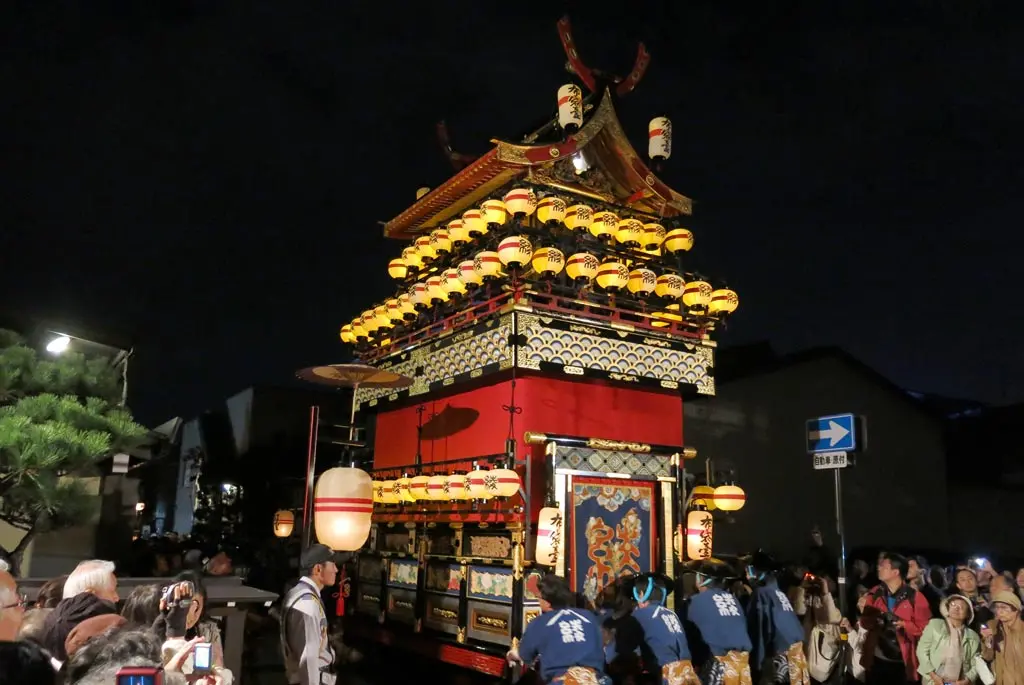
While it has been repaired many times throughout the years, the design of the Hotei-tai is the oldest, and best example of the original floats for the parade. It's marionette is the pot-bellied god of good fortune, whom you might have seen in a lot of Buddhist imagery. He's also the poster child for the marionette dances of the Fall festival.
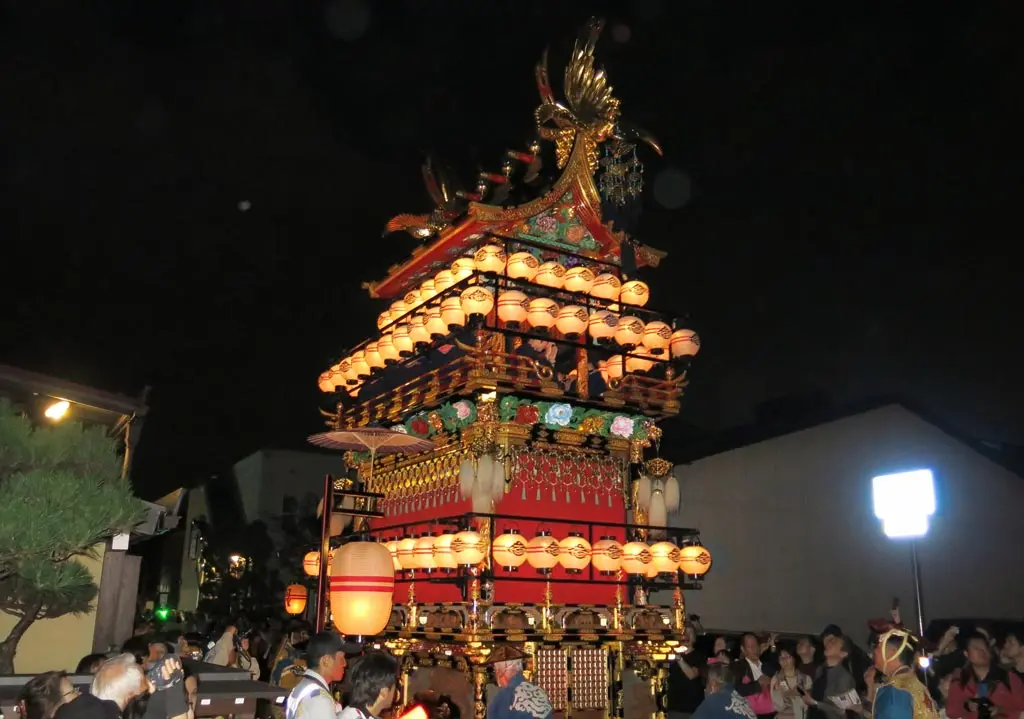
The kanji for Houmei represent bright 明 riches 豊. And apparently the bottom of the float is lined with wood carvings of 10 dogs. It's supposed to be one of the most beautiful among all the floats, but it seems pretty much the same to me.
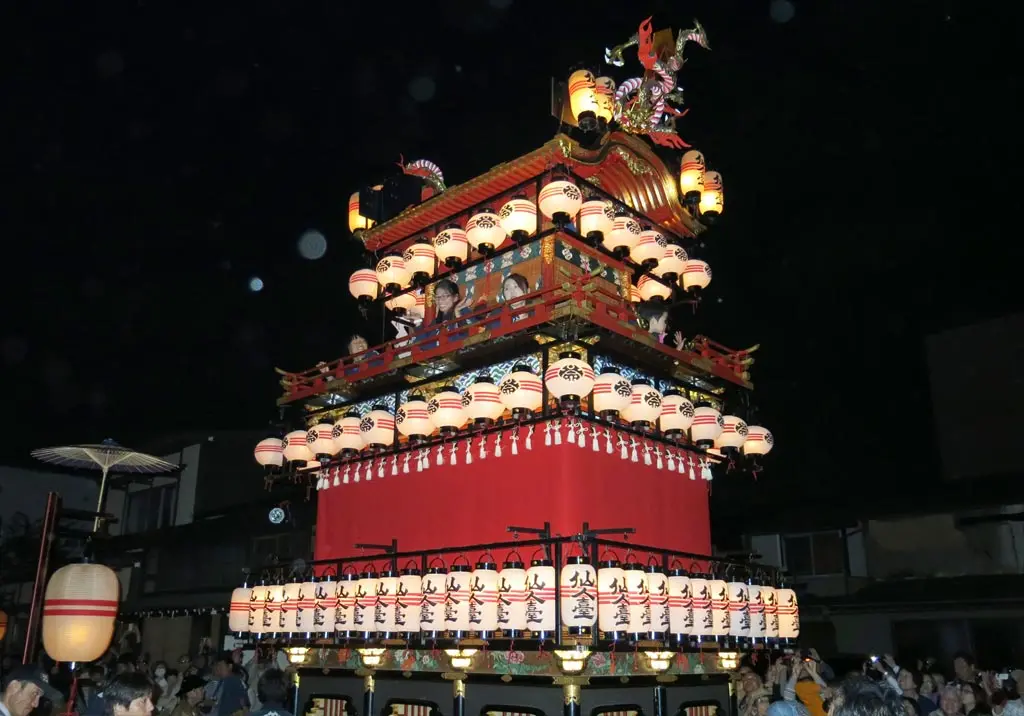
In Taoism, Sennin is the immortal mountain hermit wizard, and he sits in the front of this float as a marionette. His pale skin is as white as his beard. The roof's design is still the same from its introduction into the festival in the early 1700s.
It was a nice view, but I wanted to get back to the front of the parade, and actually watch the Shi-shi dance. I said goodbye to my 4年生 student, and continued to the next bend of the parade.
I reached the main street of Takayama as the first float, Kagura-tai 神楽台, entered the street and turned my way.
The parade continued to my location, then stopped for a break before their next performance.
I saw plenty more students. And their parents offered me drinks. The Shi-shi leaders walked through the crowd, and handed out cups of sake 酒. There was a nearby dog that barked every time once of the Shi-shi dancers got close.
Around 7:30pm, all the dancers gather together, prepared, and then began their dance.
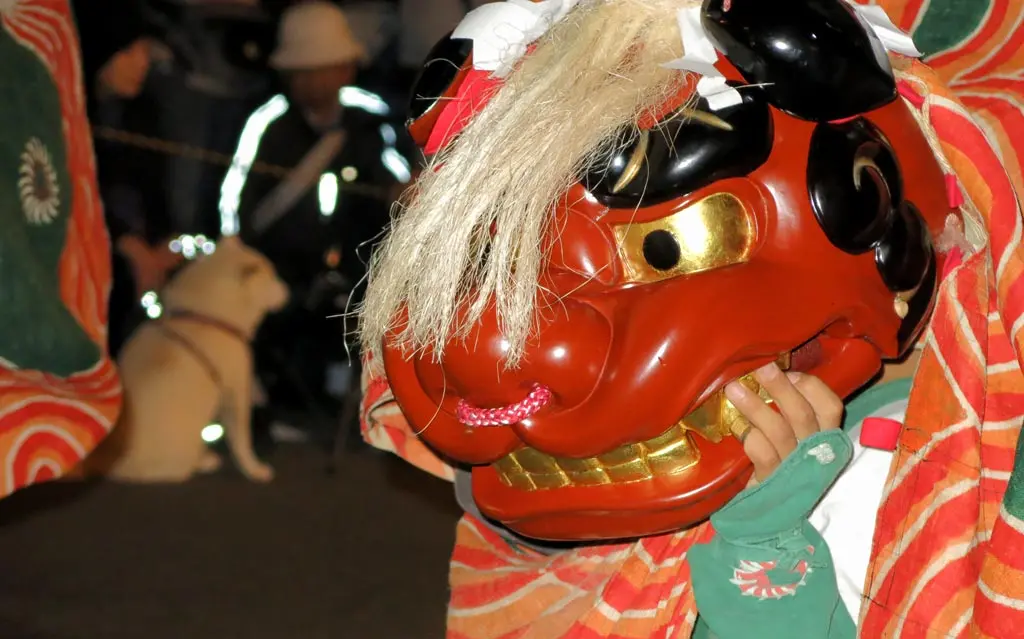
After the first round, they took a break. Then the "experienced" dancers donned their costumes. Two of them were pretty damn drunk. Before the dance, they kept coming over the crowd, giving out sake 酒, slurring their words, and being very entertaining to the old folk near me.
I think they wondered whether or not these two guys could actually pull it off.
They jumped around, and hopped around. Sometimes they almost crashed into the other pair of men. There were a lot of "よいしょs" and other murmurs from the two men, which made the elderly folk continue to laugh and enjoy themselves. The folk egged them on with がんばって. The men replied だいじょうぶ, だいじょうぶ many times. It was pretty funny, and the sake 酒 they handed out earlier had definitely fueled the crowd, too. :)
They finished to massive applause from the crowd. They took their bows, and gave a good thumbs up sinking in the praise.
The group of Shi-shi dancers gathered their belongings, and the procession continued back to Hachiman shrine. The crowd continued to cheer them on as they waved good-bye.
One of my friends caught up with me, and we moved to a slightly less crowded area to take photos of the passing floats. Here are the other floats of the Fall festival.
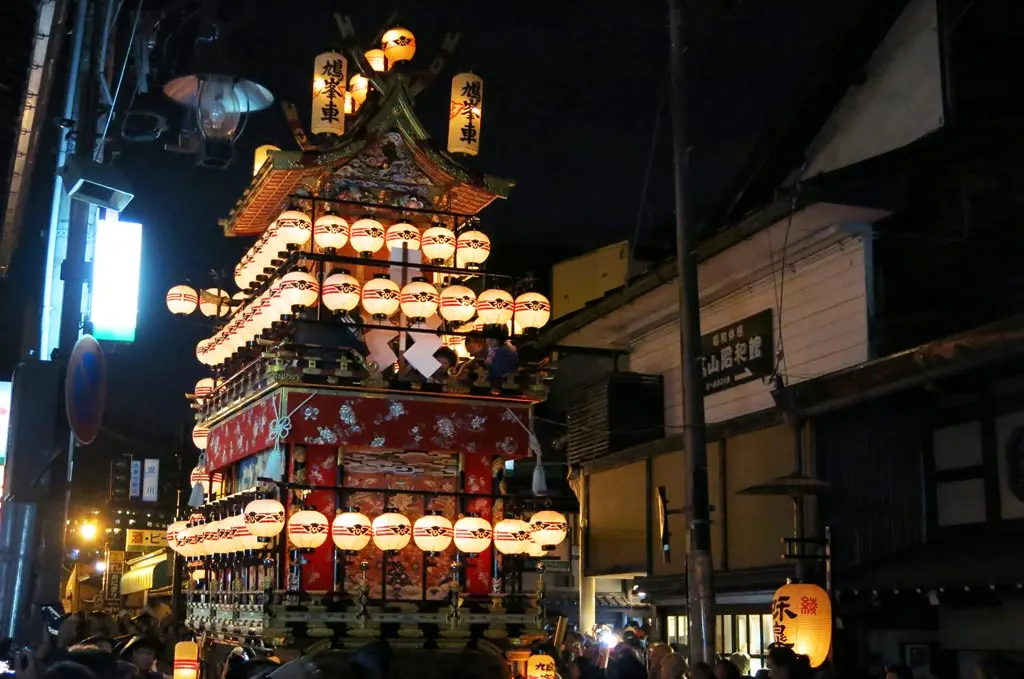
The kanji for Kyuuhou stands for dove 鳩 summit 峯. I guess the summit of a mountain full of white doves. In 1826, it was completely destroyed, and then slightly redesigned and rebuilt in 1837.
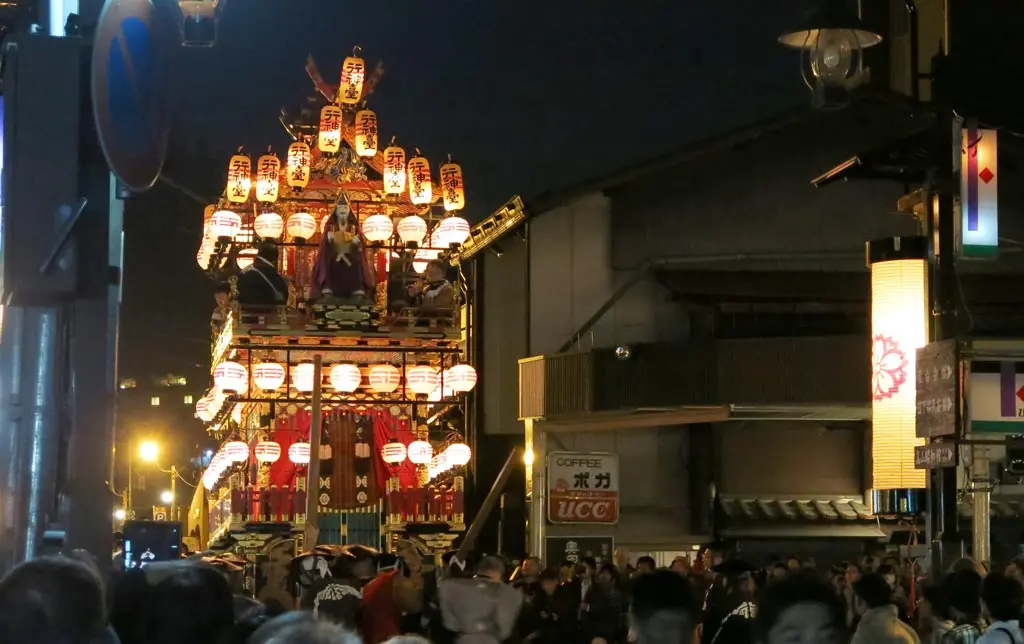
The Gyoujin-tai is one of the oldest remaining masterpieces. While the float itself was partial destroyed by fire, the marionette is still an original piece from 1782. While 行 is very obvious to any learner of Japanese, it's verb-form can stand for journey. So, I think journey 行 god 神 is an appropriate name.
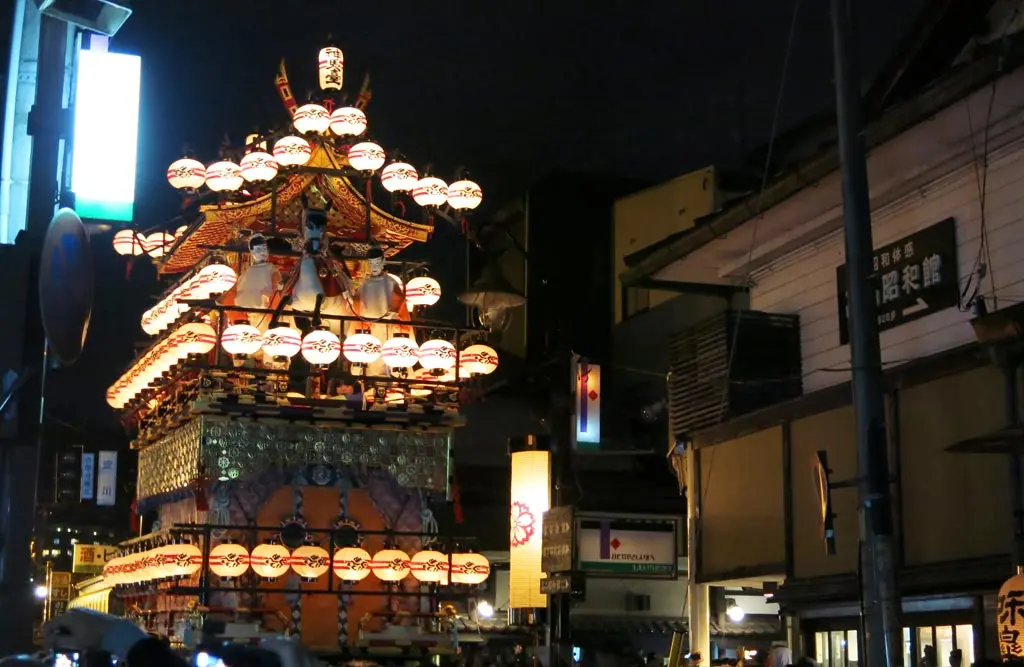
The modern design of the Jinma-tai is from 1816. Two groomsmen escort a white horse across the bow of the float. The kanji "god 神 horse 馬" is fitting.
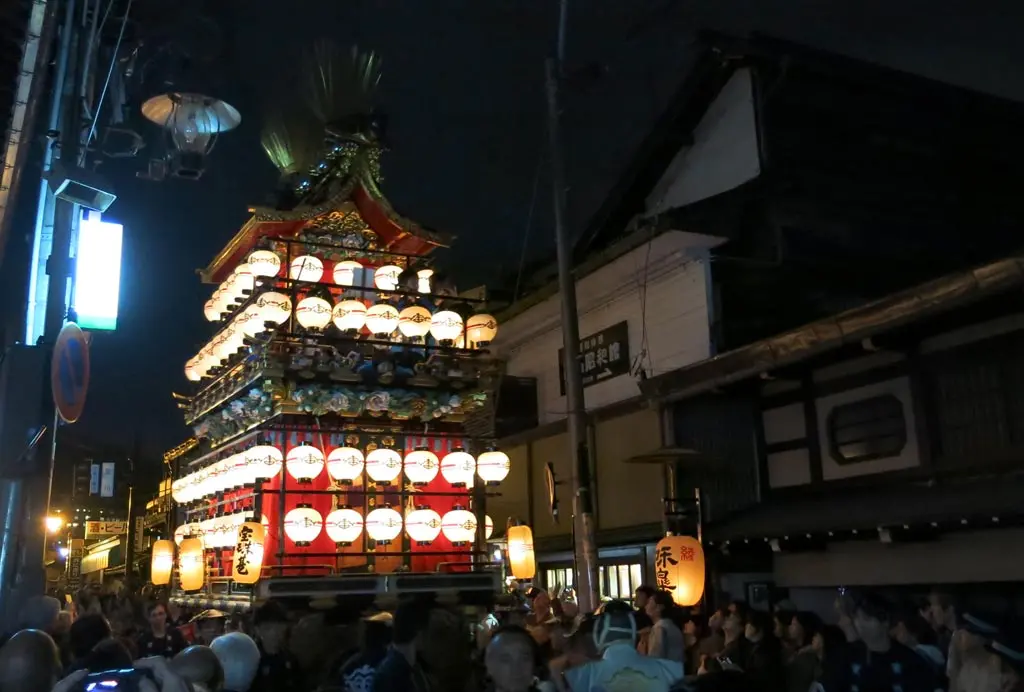
The Houjyu-tai is also known as the turtle float from the carving of a turtle on its roof. The turtle has a human-like head and ears because the original carvers had never actually seen a turtle. The kanji stands for jewel or gem, though.
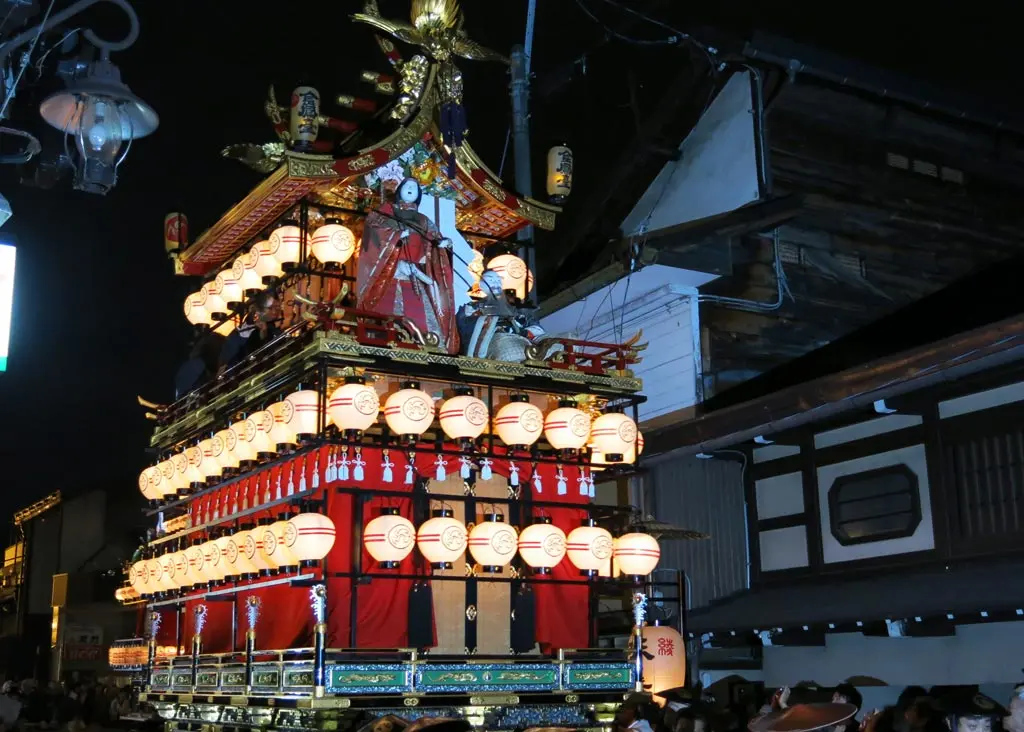
Famous wood carving master, Taniguchi Yoroku, completed many of the wood carvings on Kinpou-tai. Though, in 1804 some of those carvings were lost when the float was partially destroyed. Kin 金 hou 鳳 stands for golden phoenix.
Unfortunately, Daihachi-tai was under repairs and did not take part in the parade. It was in its store-house, and I saw it many times, but did not take any photos.
Daihachi, or Big Eight, refers to the giant wheels on the float, which measure more than 1.7 meters.
The Houou-tai is one my favorite floats. It's in the Spring festival, and in the Furukawa festival, too.
The design is incredibly detailed. It's full of color and variety. The attention to detail from the original crafters make it one of the most beautiful floats, and a center-piece, too. Throughout the years, craftsmen continued to make improvements to the float, and add even more flourish. The original design is meant to mimic the floats of Kyoto's Gion festival. I think its one of the tallest floats, too.
For the kanji, Hou 鳳 and Ou 凰 are both Chinese characters for the phoenix. One is male, and one is female. Together they represent change through the circle of death, and rebirth. Fitting as this particular float has been destroyed and rebuilt several times in the past.
As the last few floats went by, the crowd began to dwindle, and dissipate. The ALTs I caught up with started going about their business, and leave. I broke away from them and continued home, which was the same direction of the parade. At the finishing point of the parade, the Shi-shi performed their final dance. A small crowd watched, and applauded their performance.
With the parade finished, the men towing the floats began bringing them back to the store houses.
All the floats ran through the bottle neck near the Enako river 江名子川, which was the center point of the store houses. Some floats went back south. Others went north. I continued to see many more students, and other people that knew me. Every few minutes, some child would call to me, "Jim-sensei!" and I would look around to see another cute smiling face. :)
Kagura-tai 神楽台 continued to perform. Despite leading the group to this point, it was the last float to leave. It went over the bridge and continued back to Hachiman Shrine. Many of the festival officials crowded around the float, and escorted it with the towers. I followed them.
Back at Hachiman shrine, the performers on the float dismounted, and joined the officials at the shrine. A few other floats rested near the shrine entrance as well. It was over.
Lining the shores of Miyagawa River, were dozens and dozens of food stands. Almost all the youth of Takayama crowded the area to buy food and play games. I saw even more students throughout this area: elementary school 6年生, several junior high students, and plenty of high school students who still recognized me, too. :)
Some of the food looked pretty good, but nothing really stood out. It was all the same festival food you'd expect. Chocolate bananas, Takoyaki, Okonomiyaki, French Fries, Tempura vegetables. Unfortunately, no fried maple leaves. I didn't want to buy anything anyway since I had a few stalkers at this point.
I walked the few remaining blocks home, and concluded the night around 10pm.
The festival continued today, Friday October 10th, but only the day events. I could not attend. Next year, it'll be on Saturday, though, so I'll be able to view the marionette performances, provided it doesn't rain, and there aren't too many crowds.
It was another great festival in this quiet mountain town. :)
